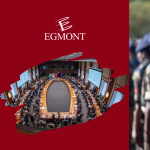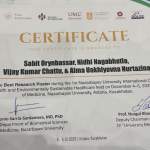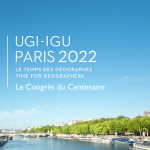Presentation at the International Geographic Union Congress

On 20 July, Natalia Skripnikova, former UNU-CRIS intern and current Associate Expert at GRID-Arendal, will present the ongoing work on the policy brief "Insights for the renewed i-AGE (Integrated & Indigenous Arctic Environmental Governance) approach - focus on tools for inclusion of Indigenous Communities" at the International Geographic Union Congress. The policy brief is co-authored by Nidhi Nagabhatla, Coordinator of the Nature, Climate and Health cluster at UNU-CRIS, and Nancy Doubleday of McMaster University in Canada.
Session: Cold Regions: Shifting Boundaries and Human Actions
08:30 - 10:15 - Virtual Room 3
Abstract:
The emerging environmental governance paradigm (EG) embraces inclusive and participatory management, co-creation, innovation, collective agenda-setting, consensus building and stakeholder involvement. Also, there is general agreement that indigenous peoples’ participation in environmental decision-making is crucial for achieving better results in safeguarding the environment and improving the effectiveness, legitimacy, and transparency of EG and acknowledges native and indigenous peoples as carriers of traditional environmental knowledge (TEK). More recently EG and climate change adaptation strategies have found a common agenda for sustainable landscapes and economies, community, and ecosystem health. In the Arctic region, and representing states, challenges in engaging indigenous peoples are often reported, along with direct and indirect implications of climate change for communities, economy, and ecosystems. Regional coalitions, like the Arctic Council and Inuit Circumpolar Council (ICC), and global mechanisms, such as the United Nations Declaration on the Rights of Indigenous Peoples (UNDRIP) do exist to safeguard Arctic Peoples and the environment and to offer recommendations on policy and institutional transformation for enhancing inclusion, equity, representation, and participation in Arctic environmental decision-making-inter alia. However, a cohesive, integrated approach would be informative. In this review we outline 3 points to address gaps and needs toward an integrated agenda: a) analysis of UNDRIP w.r.t position, voice, and stakes of the Arctic states; b) examples of UN efforts in supporting indigenous peoples in global environmental discourses e.g. UNFCCC’s Local Communities and Indigenous Peoples Platform, FAO’s Policy on Indigenous and Tribal Peoples; and c) how harmonization of agendas, interventions, commitments can amplify the i-AGE (Integrated Arctic Environmental Governance) approach for states, regions, and the communities, considering these recent changes.




